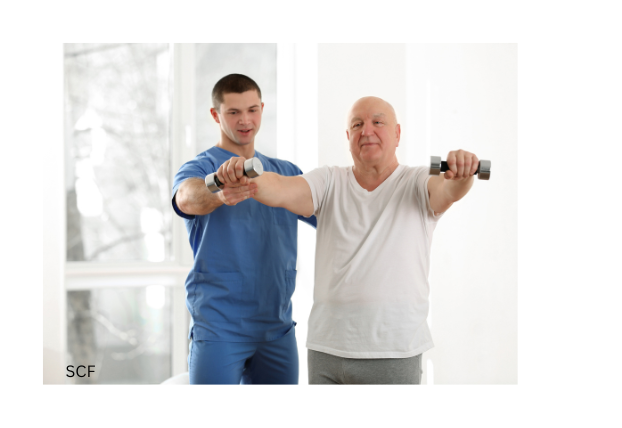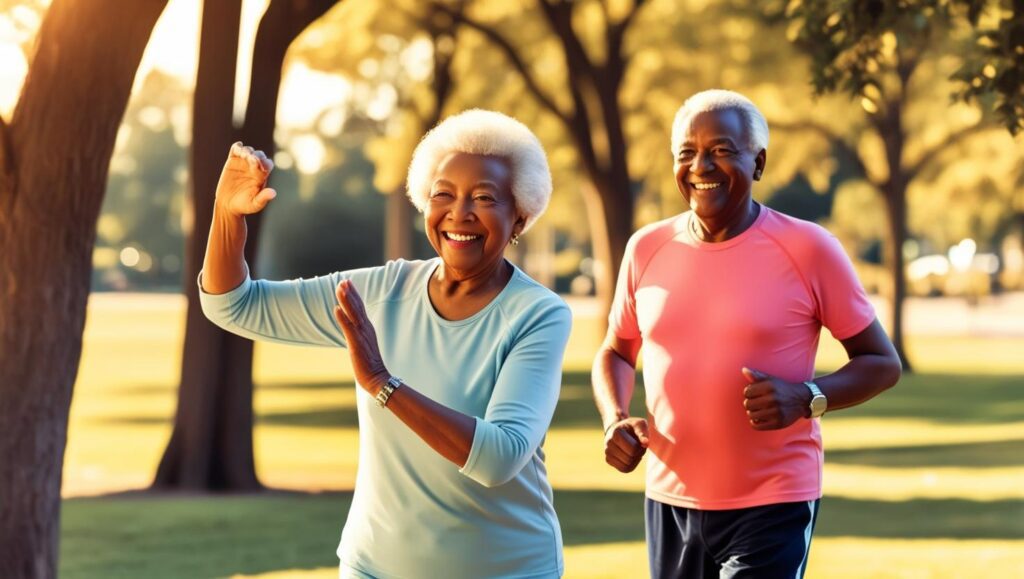Keeping Your Bones Strong: Osteoporosis Prevention for Seniors
Osteoporosis may quietly set in as we age, but it doesn’t have to be a foregone conclusion. By adopting the right lifestyle and exercise routines, seniors can actively strengthen their bones and maintain their independence. Let’s explore practical exercises and strategies that can help prevent osteoporosis and enhance overall health.
1. Understanding Osteoporosis and Why Exercise Matters
Osteoporosis weakens bones, making them brittle and prone to fractures. It’s often called the “silent disease” because most people don’t realize they have it until they suffer a break. But here’s the good news: Exercise is a powerful tool to keep your bones strong.
Two Types of Bone-Building Exercises:
- Weight-Bearing Exercises: These involve working against gravity while staying upright. Examples include walking, dancing, and stair climbing. They stimulate bone formation by applying stress to the bones.
- Muscle-Strengthening Exercises: Resistance training, such as lifting light weights or using resistance bands, builds muscle and strengthens the bones they’re attached to.
Think of your bones like muscles—they get stronger when they’re used. Regular exercise also improves balance and coordination, reducing the risk of falls, which are a common cause of fractures in seniors.
2. Easy Low-Impact Exercises to Start With
If you’re new to exercise or concerned about overexertion, low-impact activities are a fantastic place to begin. They’re gentle on your joints while still providing valuable benefits for your bones and overall health.
Examples of Low-Impact Exercises:
- Walking: A daily 30-minute walk strengthens your leg bones, boosts cardiovascular health, and clears your mind. It’s simple, free, and effective.
- Tai Chi: This ancient practice involves slow, flowing movements that improve balance, coordination, and flexibility—all crucial for fall prevention.
- Water Aerobics: Exercising in water reduces pressure on joints while building strength and flexibility. Warm water also soothes aches, making it especially beneficial for seniors with arthritis.
- Stationary Cycling: While not weight-bearing, cycling strengthens your muscles and improves endurance, indirectly supporting bone health.
Starting with these activities builds confidence and lays the foundation for progressing to more challenging exercises over time.
3. Building Bone Density with Moderate-Impact and Strength Training
Once you’re comfortable with low-impact activities, it’s time to add moderate-impact and resistance exercises to your routine. These exercises directly target bone density and overall strength.
Moderate-Impact Activities:
- Brisk Walking: Increasing your pace adds intensity and gives your bones a little extra workout.
- Dancing: Get your groove on while improving coordination and strengthening your weight-bearing bones. Plus, it’s fun and social!
- Step-Ups: Using a sturdy step or bench, this exercise strengthens your legs and hips, key areas for bone health.
Strength-Training Exercises:

- Resistance Band Workouts: Use bands to perform arm curls, leg presses, or side pulls. They’re versatile and great for building muscle.
- Light Weight Lifting: Start with light dumbbells for exercises like bicep curls or shoulder presses. Gradually increase the weight as you build strength.
- Chair Squats: Stand up and sit down repeatedly using a sturdy chair. This simple move strengthens leg muscles and promotes bone density.
The key is to start small and gradually increase the intensity and resistance as your body adapts. Progression is essential for maintaining and building bone strength.
4. Improving Balance and Flexibility to Prevent Falls
Preventing falls is just as critical as strengthening bones. Balance and flexibility exercises help improve stability and posture, reducing the likelihood of trips and stumbles.
Balance Exercises:
- Heel-to-Toe Walk: Walk in a straight line, placing one foot directly in front of the other. This improves coordination and balance.
- Standing on One Foot: Practice balancing on one leg for 10-15 seconds. Use a stable surface for support if needed.
- Yoga Poses: Gentle poses like Tree Pose and Warrior II improve balance, flexibility, and focus.
Regular practice of these exercises enhances your stability, allowing you to move with confidence in your daily activities.
5. Crafting a Long-Term Bone Health Plan
Consistency is the backbone of any successful exercise regimen. To maintain strong bones and prevent osteoporosis, it’s essential to combine regular exercise with a bone-friendly lifestyle.
Tips for Creating a Sustainable Plan:
- Mix It Up: Alternate between walking, strength training, and balance exercises to keep things interesting.
- Set Goals: Start with manageable goals, like 10-15 minutes of exercise a day, and gradually increase as you gain strength and stamina.
- Daily Movement: Everyday activities like gardening, cleaning, or taking the stairs contribute to bone health.
- Stay Social: Join group exercise classes or invite friends for walks to make your workouts enjoyable and motivating.
By diversifying your routine and keeping it engaging, you’ll be more likely to stick with it in the long run.
6. Supporting Your Bones Beyond Exercise
Exercise is crucial, but it’s only part of the equation. A bone-healthy lifestyle includes proper nutrition, avoiding harmful habits, and staying proactive about your health.
Nutritional Support:
- Calcium: Dairy products, leafy greens, and fortified foods are excellent sources.
- Vitamin D: Spend time in the sunlight or eat foods like salmon, eggs, and fortified cereals.
Lifestyle Adjustments:
- Limit smoking and alcohol consumption, both of which can weaken bones over time.
- Schedule regular bone density screenings to monitor your bone health and catch any issues early.
Combining exercise with these lifestyle practices creates a holistic approach to maintaining bone strength and overall well-being.
Conclusion: Taking Charge of Your Bone Health
Osteoporosis prevention isn’t just about avoiding fractures—it’s about living an active, independent, and fulfilling life. By incorporating weight-bearing exercises, strength training, balance work, and a bone-healthy lifestyle, seniors can significantly reduce their risk and keep their bones resilient.
Start small, stay consistent, and don’t be afraid to adapt your routine to your needs. Remember, it’s never too late to take control of your bone health. Every effort you make today is an investment in a stronger, healthier tomorrow. Your bones will thank you, and so will your future self!


